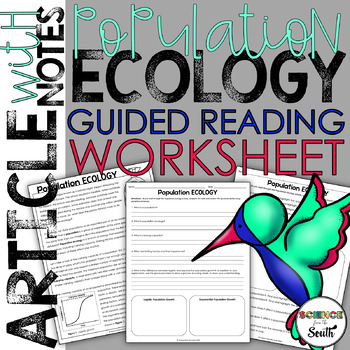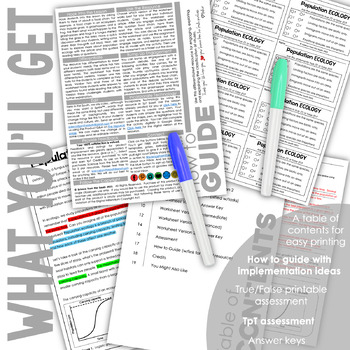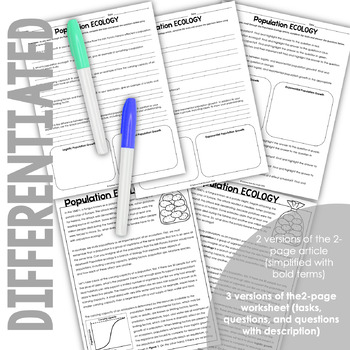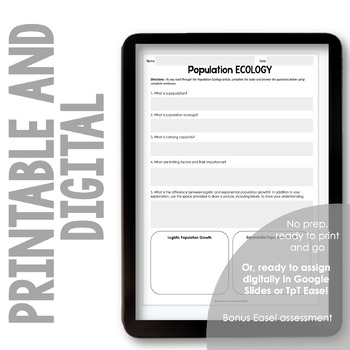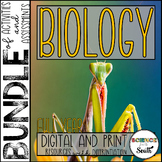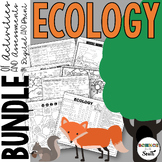Population Ecology Guided Reading Article Notes & Assessment in Print & Digital
- PDF
- Easel Activity
What educators are saying
Also included in
- Your students can use any biology curriculum bundle to learn about biology concepts, including characteristics of life, biochemistry, classification, cells, genetics, evolution, and ecology with any biology bundle. But, what if you had a full year of biology creative curriculum activities, assessmenPrice $230.00Original Price $401.25Save $171.25
- Your students can learn about ecology. But, do you have a unit bundle of differentiated ecology activities and assessments that best fit their learning needs? They can with this Ecology Activity and Assessment Unit Bundle. Most resources includes differentiation, digital, and printable options for lPrice $70.00Original Price $101.25Save $31.25
Description
Your students can understand population ecology. But imagine how well they could understand with access to an inquiry activity that would allow them to gather information about population growth, carrying capacity, immigration, emigration, and more themselves. This population ecology guided reading activity is a perfect student-centered learning experience for gathering information about ecology populations. The resource has two levels of differentiation for the article and three for the notes worksheet to meet students' needs at their individual level or ability. As the teacher, you simply print and go with the no-prep, ready to use resource. Or, assign the resource digitally in TpT Easel or Google Slides. Your students read the population ecology article and answer questions or complete tasks as notes or as an assessment.
Why are you waiting to download the Population Ecology Guided Reading Article? The printable (or digital activity) is just what you need to add to your Biology or Environmental Science lesson plan to engage your high school students in a meaningful and rigorous learning activity while impressing your administrators. So, print and go! Or assign the learning activity and watch your biology students have fun while learning about the ecology of populations, population growth, and more.
You Will Get:
- A no-prep, printable pdf resource download.
- A table of contents for organizing and printing.
- 2 differentiated versions of the article (simplified version includes bolded terms).
- 3 differentiated versions of the guided reading worksheets for notes or assessment (tasks, questions, and questions that ask for explanation).
- A how to guide with ideas on engaging your students into the activity, use of the resource, further differentiation, and more.
- Answer keys
- TpT Easel activity and compatibility
- Google Slides version of the resource
- Bonus Easel assessment
You Will Like:
Energy Flow and Trophic Levels Maze Worksheet
Ecology Review Scavenger Hunt Activity
Ecology BIG Bundle of Activities and Assessments
BIG Biology Curriculum Bundle of Activities and Assessments
Feedback and Followers:
Did you know that you can receive credit towards future TpT purchases by reviewing this product? Leave a review at the product page after you download the resource or through “My Purchases”. Use your TpT credits that you earn to purchase other resources.
Do you want to be the first to know about new resources, sales, and free resources? Sign-up here to get email notifications and my Mix it Up Activities and Assessment eBook with templates. And don't forget to click the green star next to my store logo to become a follower. Connect in other ways using the links below! We love to see resources in action. Share them at @sciencefromthesouth to receive a FREEBIE!
Happy Teaching!
Heather

